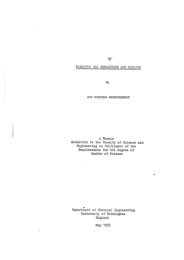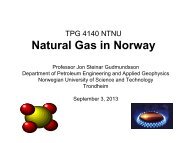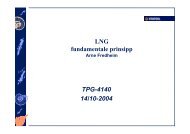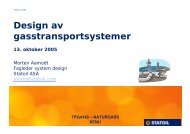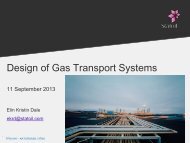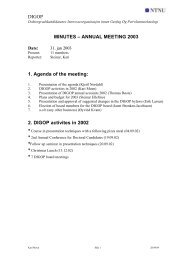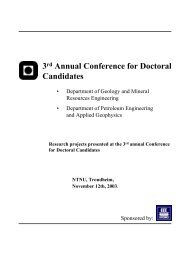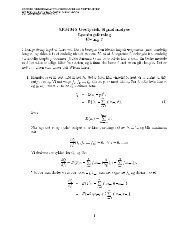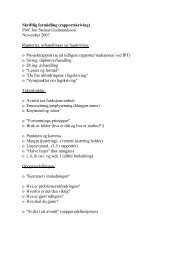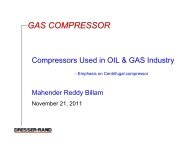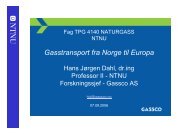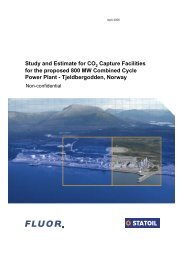Ormen Lange Utbyggingen - NTNU
Ormen Lange Utbyggingen - NTNU
Ormen Lange Utbyggingen - NTNU
You also want an ePaper? Increase the reach of your titles
YUMPU automatically turns print PDFs into web optimized ePapers that Google loves.
6 Simulation with deposits in the pipeline<br />
The simulation has been performed with deposits in the pipeline, compared two cases;<br />
one with production flow and one where the flow has been reduced to 1 / 10 of the original<br />
flow. Pressure curves have been extracted from HYSYS and sound velocity calculated.<br />
All the data that has been acquired in HYSYS have been extracted to Excel for further<br />
calculations.<br />
To simulate deposits, a narrowing is created in the multiphase pipeline. Different deposit<br />
sizes have been tested; 10 mm and 50 mm. The deposits have been placed in the<br />
beginning of the hydrate area; this is without MEG injection, more exactly after 56<br />
kilometres. This is based on the pressure and temperature equilibrium curve, and the<br />
hydrate area is for a pipe in production.<br />
Simulation of these cases has also been done at Markland, by expert Jon Rønnevig. The<br />
pressure pulse was calculated with the custom designed program, PPsim TM .<br />
6.1 Sound velocity<br />
The sound velocities calculations have been done with a simulation program called<br />
PPSound TM [14], for the two cases; production flow and reduced flow. The previously<br />
described model in chapter 3.1, has been tested, as mentioned it doesn’t give the correct<br />
results at given places in the pipeline, however the mean sound velocity is quite close to<br />
the real mean sound velocity, sadly the mean velocity isn’t very applicable for these<br />
calculations. The results from the calculations are shown in Figure 15 and Figure 16.<br />
6.2 Deposit detection<br />
Detecting deposits is based on the pressure pulse that is generated when the quick-acting<br />
valve is closed. Two conditions decide if the operation will be a success or not; the size<br />
of the pressure pulse and how fast the pressure pulse dies out. According to Equation<br />
3.10 it is possible to calculate the distance the pressure pulse is capable of travelling. To<br />
acquire information with regards to friction, pressure and so on, it is necessary that the<br />
Deposits Detection Using Pressure Pulse Technology<br />
<strong>Ormen</strong> <strong>Lange</strong> Pipelines Case Study Using Process Simulation Tools<br />
15



